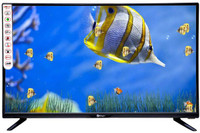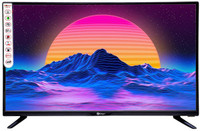How To Pick A Projector Based On Room Size And Lighting
Whether you live in a spacious home with sunlit halls or a snug flat with dim corners, the right projector can make all the difference. With the right pick, your living room can feel like a theatre and your bedroom can double as a cosy screening room.
Projector Buying Guide: Pick The Right Projector For Any Room And Light Setup.
There's something magical about dimming the lights, rolling out a bowl of popcorn, and watching a film projected across a wall that seems larger than life. A projector can transform an ordinary evening into a full-fledged cinematic escape. But here's the tricky part: not every projector works the same way in every room.
Some people buy an ultra-bright model only to discover that it overwhelms a tiny space, leaving them squinting. Others settle for a budget options on projectors that looks fabulous online but washes out completely the moment a ceiling fan light is turned on. So how does one decide?
Selecting the right projector depends on matching its brightness and throw distance to your room's size and lighting conditions. A well-chosen projector ensures clear visuals whether in a compact dim room or a large brightly lit space. It's all about finding that sweet balance between room size and lighting. Whether you live in a spacious home with sunlit halls or a snug flat with dim corners, the right projector can make all the difference. Let's walk through the essentials.

Choosing a projector is not just about grabbing the fanciest model or the one with the brightest advertisement; Photo Credit: Pexels
1. Understand Room Size Before Anything Else
Room size is the foundation. A small bedroom doesn't need the same kind of projector as a large hall. In a compact space, a short-throw projector is often the hero, it can produce a big screen image from just a couple of feet away. Imagine being able to project a 100-inch screen while sitting barely three feet from the wall. That's technology working smart, not hard.
In a larger room, though, long-throw projectors make more sense. They can be placed further away and still deliver sharp, vivid pictures. Think of a family gathering in a big drawing room where everyone wants a clear view. The placement distance gives more flexibility in screen size, and no one has to crowd near the projector.
So, before even browsing catalogues, measure the room. Note how much distance you can leave between the projector and the wall or screen. This simple step will instantly narrow down the options and save a lot of confusion later.
2. Lighting Conditions Shape the Experience
Lighting can make or break the magic. Picture this: a projector beaming its best, but the afternoon sun barges through the curtains, washing out all the colours. That's heartbreak on screen. Brightness, measured in lumens, is the knight in shining armour here.
For dark rooms, even a 1,500-lumen projector works wonders. Dim lighting lets colours bloom, and films look lush. But in brighter settings, say a living room with large windows, something closer to 3,000 lumens or higher is a safer bet. It ensures images don't look like faint shadows of what they're meant to be.
If the budget allows, invest in blackout curtains or blinds. Sometimes, spending ₹2,000 on a good pair of curtains gives better results than stretching for a projector double the price. After all, light control isn't just practical, it sets the mood for the experience.
Also Read: Top 5 Portable Projectors For Learning And Entertainment At Home
3. Screen Size and Viewing Distance Go Hand in Hand
Bigger isn't always better. Yes, it's tempting to chase that 150-inch screen, but not every wall, or eye, can handle it. The rule of thumb is simple: the viewing distance should be about 1.5 to 2.5 times the screen width. So, for a 100-inch display, you'll want viewers sitting at least 10 to 12 feet away.
In smaller bedrooms, a 60- to 80-inch image feels just right, cosy without overwhelming the senses. In spacious living areas, go ahead and aim for 120 inches if the distance permits. The goal is balance, comfort over bragging rights. Nobody enjoys craning their necks like they're in the front row of a cinema hall.
Think of it like ordering food at a restaurant. Just because the biggest thali is available doesn't mean it's enjoyable. Sometimes, a medium plate is perfect, it satisfies without leaving you gasping.
4. Resolution: Clarity for Every Corner
Resolution is where things get crisp. A 480p projector may seem pocket-friendly, but the moment subtitles appear, the charm fizzles out. For most modern households, at least 1080p (Full HD) is a must. It keeps visuals sharp and text readable, even from odd angles.
Now, 4K projectors sound like the ultimate dream, and yes, they're spectacular, but they also carry hefty price tags, often touching ₹1,00,000 or more. For many, that's overkill, especially in smaller rooms where the difference isn't striking.
Here's a balanced approach: if the screen size is under 100 inches, a 1080p projector works beautifully. For bigger screens and dedicated theatre setups, stretching for 4K makes sense. It's like buying spectacles, choose the lens strength that actually fits your vision needs, not just the fanciest frame.

Pick top projectors to create cinema at home under budget; Photo Credit: Pexels
5. Contrast Ratio Creates the Mood
Ever noticed how in some films, the shadows look grey instead of deep black? That's the contrast ratio at play. It's the measure of how well a projector can show differences between dark and light areas. A higher contrast ratio makes scenes look rich, with depth and detail.
In dim rooms, contrast becomes even more noticeable. A projector with at least 10,000:1 contrast ratio ensures darker scenes, like night skies or candlelit dinners, don't look like smudges. Sports lovers, too, benefit from this when watching cricket matches under floodlights.
Of course, specifications on paper don't always tell the whole story. Reading reviews and watching demo videos helps. Think of contrast ratio as the seasoning in a dish, it doesn't shout for attention, but without it, the flavour falls flat.
6. Portability vs Fixed Setup
Not every household can dedicate a room to a home theatre. Some prefer moving the projector around, today in the bedroom, tomorrow on the terrace for an outdoor movie night. In such cases, portable projectors with built-in speakers and compact designs are lifesavers.
However, portability often comes with trade-offs: smaller size, lower brightness, or less impressive sound. For families who plan regular screenings in one room, investing in a fixed setup with ceiling mounts and external speakers delivers better long-term satisfaction.
It's a bit like choosing between a scooter and a car. Scooters are nimble and convenient, but cars are built for comfort and performance on longer rides. The right choice depends on lifestyle, not just features.
7. Sound Matters More Than Expected
Projectors often boast about picture quality but quietly skimp on sound. Built-in speakers may work for solo viewing, but when friends gather for a film night, the audio feels flat and thin. Imagine watching an action scene where the explosion sounds like a muffled thud, that's a let-down.
Pairing the projector with external speakers or even a soundbar makes a world of difference. A decent Bluetooth speaker costing around ₹4,000 can elevate the entire experience. For larger rooms, surround sound systems bring cinema vibes home, making cricket commentary or film dialogues feel immersive.
After all, cinema is as much about sound as visuals. A projector showing a sunset is beautiful, but add the crackle of waves and chirping birds, and suddenly it feels alive.

Pick top projectors to create cinema at home under budget; Photo Credit: Pexels
8. Budget: Balancing Dreams and Reality
Dreaming of the perfect setup is easy until the price tag enters the scene. Projectors in India range from ₹10,000 budget models to premium devices crossing ₹2,00,000. The trick is finding that sweet spot where performance meets affordability.
For casual use, cartoons for kids, occasional film nights, a projector between ₹15,000 and ₹25,000 works well. For enthusiasts wanting regular, high-quality screenings, budgeting between ₹40,000 and ₹80,000 opens access to Full HD or even entry-level 4K.
One smart move is to think of the entire package, not just the projector. Include costs for a screen (₹5,000–₹10,000), speakers, and maybe curtains. It's like buying a car, you don't just stop at the vehicle, you also plan for fuel and maintenance.
9. Connectivity and Smart Features
Gone are the days of juggling cables like a magician's act. Today's projectors come loaded with HDMI ports, USB slots, and wireless options. Some even run Android TV, letting you stream directly from Netflix or YouTube without extra devices.
For households where kids love gaming, low input lag is a bonus, it keeps controls responsive. For working professionals, wireless screen mirroring means smoother presentations without fumbling with laptops.
Think of these features as the seasoning that makes everyday use effortless. A projector with just the right connectivity saves headaches and keeps the focus where it belongs, on the screen.
10. Future-Proofing the Investment
Technology evolves faster than monsoon weather. Buying a projector isn't just about today's needs, it's about tomorrow's too. Opting for a model that supports 4K input, even if it downscales to 1080p, ensures future content doesn't go to waste.
Lamp life is another overlooked factor. LED and laser projectors often last 20,000 to 30,000 hours, meaning years of use without worrying about replacements. Traditional lamp projectors, while cheaper upfront, may demand costly bulb changes every few years.
Future-proofing isn't about chasing the fanciest option. It's about choosing wisely so that two years down the line, the device still feels relevant and satisfying. Like investing in a sturdy piece of furniture, the right projector should age gracefully.
Products Related To This Article
1. E GATE Atom 4X Fully Automatic Projector 4k Ultra HD
2. WZATCO Yuva Go Android 13.0 Smart Projector
3. BIGASUO Andriod 5G WiFi Projector Home 4K Support 1080P Smartphone
4. Portronics Beem 520 Smart LED Projector with Built-in Stand
5. ZEBRONICS PIXAPLAY 24, Smart LED Vertical Projector
6. Lifelong Lightbeam 2 Pro
7. Lumio Arc 5 Projector
Choosing a projector is less about chasing numbers on a spec sheet and more about understanding your room, your habits, and your budget. A tiny bedroom may thrive with a short-throw Full HD model, while a bright living room might demand extra lumens and blackout curtains. Sound, portability, and future-readiness all play their roles in the final experience.
The magic lies in harmony. When the screen size fits the room, the brightness balances the light, and the sound fills the air, every film night becomes memorable. Whether it's cheering during a cricket match, revisiting an old classic, or simply enjoying cartoons with children, the right projector turns walls into windows of imagination. So measure that room, dim those lights, and get ready to buy projectors onlinr - your personal cinema awaits.
Disclaimer: The images used in this article are for illustration purposes only. They may not be an exact representation of the products, categories, and brands listed in this article.













